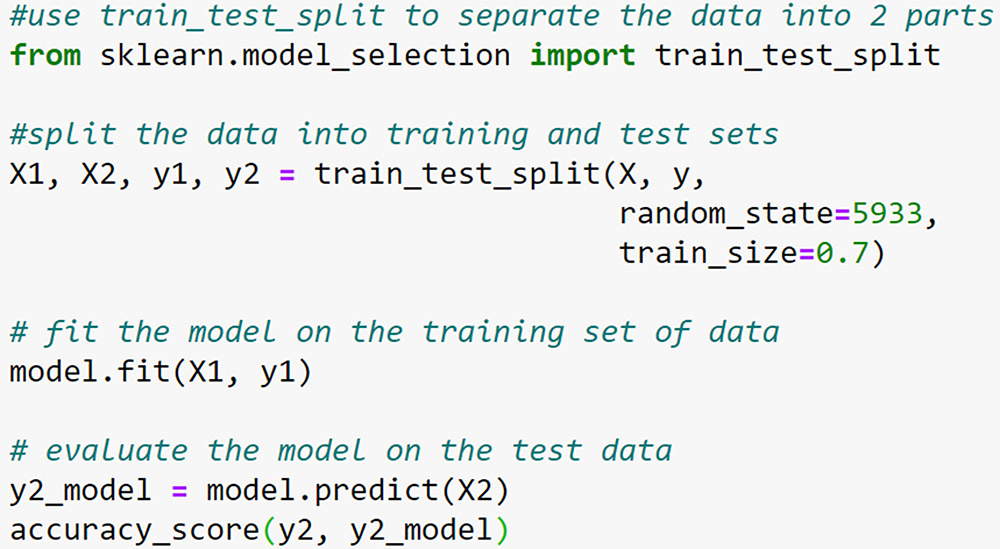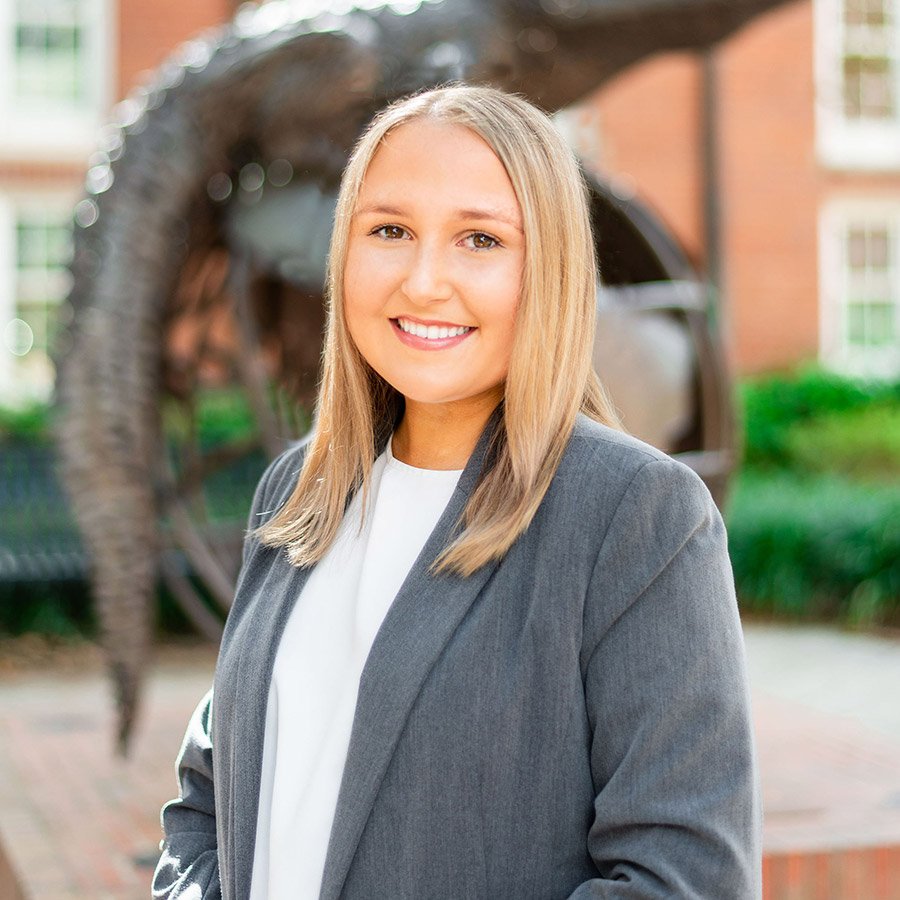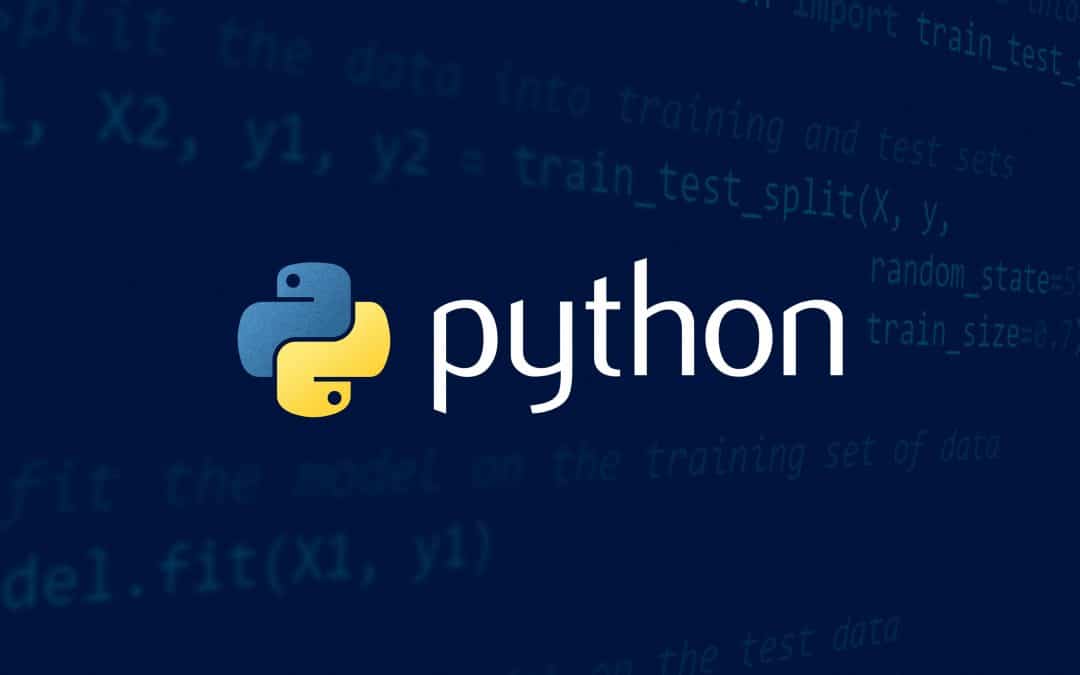New Python course sets analytics and AI foundation for Warrington students
This past fall semester 54 Warrington students got, what was for many of them, a first look into understanding the world of business analytics and artificial intelligence (AI) thanks to a new course taught by marketing lecturer Dr. Joel Davis (DBA ’20).
The course, Foundations of Business Analytics & Artificial Intelligence, focuses on teaching students the basics of data analytics and machine learning through the powerful programming language Python.

Marketing lecturer Dr. Joel Davis.
Python.org says it’s, “an interpreted, object-oriented, high-level programming language with dynamic semantics,” but Davis thinks the world’s second-most popular programming language could use a better introduction.
Instead, Davis describes Python as a free programming language used by data scientists, analysts and many others. Because it’s a general-language program, it can be used for a variety of purposes, and is often the tool of choice at companies such as Google, Amazon, Facebook, IBM, NASA, Accenture and Deloitte, he explained.
Through a variety of assignments, Davis’ goal is to teach students enough about the basics of Python so that it becomes part of their data literacy toolbox.
“The assignments are designed to build confidence, not instill fear or apprehension,” he said. “So, although the difficulty definitely ramps up, I always wanted the students to feel like [the assignments] were absolutely doable if they put the effort in.”
After starting with some simple code, which Davis writes and students repeat, students then learn about identifying, cleaning, understanding basic properties of data, followed by creating their own data visualizations.
The final project students work on, Davis explained, is an image classifier where they identify faces in an image. In his first semester teaching the course, Davis is impressed with the students’ creativity, and they even inspired some of his own.
“A team this year decided to try to identify Santa in an image, which seriously made my day,” he said. “I think I might borrow that idea and create a Santa detector with my kids.”

An example of Python code from Davis’ class.
For Davis, knowing this was many students’ introduction to Python, it was important to him to keep the teaching process simple and use as few PowerPoint slides as possible (less than 20 for the whole course, he estimates).
“My basic idea and principle was ‘show code,’” he said. “If I was talking about a subject, I showed them how the code worked. I wanted them to build a solid base of ‘this is what code can do, and here is how I find the details to do it.’”
Based on his personal experience with data, analytics and AI, it was also important to Davis to make sure the students understood that Python is a tool that should be used early and often.
“Early on in my career I kept seeing problems that seemed like they should be solvable, but that were left lingering because no one had the skills to solve them,” said Davis, who in addition to teaching is Chief Strategy Officer at Revenue Management Solutions. “I also watched as decision-makers just guessed, or went with their gut, even when there was a vast amount of information that was available to make a more informed decision. I kept hearing ‘it is too complicated to use that data’ and things like that.
“So, I learned how to use that data.”
Davis’ experience highlights the importance of individuals learning to harness the power of analytics and AI, no matter their field, in order for them to make decisions that allow their businesses to progress forward.
“There is not a single professional domain that is untouched by data,” he said. “Professionals that can leverage that data will be in high demand, those that can’t, won’t.”

Heavener School of Business student Brooke Bernstein.
Heavener School of Business student Brooke Bernstein (BABA ’21), who was in Davis’ inaugural class, said she now understands how critical it is that she build her analytics and AI foundation now in order to be ready for her future career.
“My biggest takeaway from Foundations of Business Analytics & Artificial Intelligence was the need for data analytics in any domain you can think of,” she said. “From healthcare to finance, there are complex problems that are waiting to be solved through analyzing and interpreting data.”
While Davis believes this class is important for students to gain a baseline understanding of analytics and AI, additional courses at Warrington will continue to prepare students to use these powerful decision-making tools.
“I don’t think this single class on its own is important,” he said. “I really like and am excited by Warrington’s overall focus and alignment towards data literacy, AI and analytics. My hope is this class can become a foundation the students can build on, the start of an experience in learning that motivates students to continue exploring the subjects while in college and in their professional careers beyond.”
Davis’ hope has come true with Bernstein, who notes that this class will be useful no matter what field she is in throughout her career.
“Through learning about data analytics and artificial intelligence in this class, I have developed valuable critical thinking skills, which will be helpful in all of my future courses,” she said. “Additionally, regardless of the domain I decide to work in, the data analytics skills I have acquired through this course will likely make me more competitive in the job market.”




